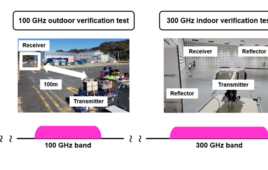As if driven by some unseen hand, providing “true” broadband in rural America has become more important to over 2,000 Wireless Internet Service Providers (WISPs) serving the country. This is putting the onus on WISPs to deliver higher speeds and higher quality of service to meet the demands of “densification.” Their tools include using new frequency allocations, technological advancements of LTE, higher orders of MIMO, and high-performance antennas. And they will have to do it quickly, as thanks to government money, wireless carriers are beginning to pay attention to rural America.
In fact, it’s arguable that there has never been as much activity about bringing true broadband (i.e., the 25 Mbps Mb/s downlink speed assumed by the government) to underserved areas. In Congress, no amount of legislation seems to be enough, and bills are in various states of progression, some addressing fixed wireless access (FWA) directly or including it parenthetically. Wireless carriers, AT&T in particular, are churning out press releases announcing either new or improved service in underserved areas, and the search for “new” spectrum has become a gold rush.
There are at least six bills in play within the House or Senate designed to address some aspect of rural connectivity, from financing to infrastructure. Even a cursory look at their content shows that FWA is most likely the technology providing the service. The question is whether WISPs will be the companies exclusively providing it as they always have, for several reasons.
One, thanks to the current roll-out of the interoperable public safety broadband network under the auspices of FirstNet, AT&T is in a much better position to provide broadband to new places. Since the company (along with Verizon Wireless) already plans to deliver 5G capability first in the form of FWA for residential applications, this may be an added bonus.
Second, there is enormous potential revenue to be had from an entirely new source, and huge numbers of IoT gateways will be able to deliver aggregated data from wireless-enabled sensors to the internet. The revenue from IoT alone is a reasonable case for moving into areas carriers once ignored, because it was too expensive to set up the infrastructure to serve a few hundred people in smaller municipalities.
Third, the satellite communications industry is launching large constellations of small satellites in low-earth orbit with much higher throughput and lower latencies than current ones. Although the laws of physics dictate that latency remains too high to provide high-quality voice and data service, satellites have the advantage of being able to serve almost anywhere with minimal investment, unlike terrestrial solutions with physical infrastructure, whether it’s copper, fiber, or microwave links.
Finally, the FCC and the federal government appear to be earnestly attempting to make good on their promise to “create” at least 500 MHz of new spectrum opportunities. The Citizens Broadband Radio Service (CBRS) is the most visible of these, but there are several others, both licensed and unlicensed. There is fierce competition for every kilohertz made available, and historically those with the deepest pockets get the spectrum. In short, for the first time since the inception of the WISP industry, actual tangible efforts from other parties are presumably about to bring broadband to rural and other poorly-served areas.
Dealing with Densification
Depending on the source, forecasts for the WISP industry project it to increase in subscribers from 4 million at the end of 2016 to 8 million by 2021, with revenues doubling as well from $2.3 billion to more than $5.2 billion (Figure 1).
As densification increases, the trend to increase the number of ports on an antenna also surges. MIMO has become more popular for its ability to increase a network’s overall capacity and data transmission capabilities. What began as 2 x 2 MIMO has risen to 4 x 4 MIMO in current radios, and 8 x 8 MIMO is soon to follow from radio manufacturers such as Mimosa, Cambium, Ubiquiti, and China-based Baicels. An 8 x 8 configuration can deliver at least twice the capacity per sector than a 4 x 4 system, which will allow fewer installation sites for the same coverage area. In fact, WISP operators are already reaping these benefits by deploying two current 4 x 4 radios with a single 8 x 8 sector.
Further, operating an 8 x 8 or 4 x 4 radio in split-mode allows less infrastructure to be installed on towers—particularly when combined with dual-sector antennas. In combination with carrier aggregation, these higher-order MIMO radios will provide a drastic improvement in spectral efficiency, with the added benefit of redundancy and increased throughput.
Densification also requires antennas with narrower beam widths to serve more subscribers in a specific area. Many WISPs begin with an omnidirectional antenna and a single radio to serve only a handful of clients. As their client-base grows, the antenna is replaced with a 3 x 120 deg. or 4 x 90 deg. sector antenna. This has been the natural progression of growth in WISP’s access point infrastructure. Now, the push for densification and the transition to LTE requires sector antennas with 65 deg. and even 33 deg. beamwidths, the latter allowing up to eight or more radios to be placed around the tower. In addition, antenna specifications are being driven to higher standards to enable the design of networks with higher spectral efficiency and improved quality of service.
A 4 x 4 or 8 x 8 sector antenna contains two or four dual-polarized antenna arrays inside a single radome In MIMO, the channels must be uncorrelated, so a receiver can easily distinguish between separate bits of information on each channel. A 4 x 4 sector antenna uses polarization diversity and spatial diversity to achieve four separate channels of information. The horizontal spacing between the arrays inside the radome and the arrangement of the antenna elements are optimized to minimize port-to-port isolation, cross-polarization levels, and the impact of the adjacent array on the co-polarization patterns of each port contributed to uncorrelated channels.
Many WISPs have learned through trials and tribulations the dangers of placing two 2 x 2 sector antennas close to one another to mimic a properly-designed 4 x 4 sector antenna. A general guideline is to use 1-m spacing to avoid significant degradation of the azimuthal pattern’s beamwidth, ripple, and side- and back-lobe performance.
The benefits of 4 x 4 and 8 x 8 MIMO antennas include less hardware, which reduces expensive tower real estate and makes them better suited for areas with limited space and places where antennas must conform to strict municipal or community architectural guidelines. A single mounting point on a tower halves infrastructure, installation, and maintenance costs.
At the other end of the link, CPE antennas have remained basically unchanged over the years as they get the job done effectively at low cost. Over moderate-distance links, often the 8-to-15 dBi gain afforded by a flat-panel antenna, are enough to provide adequate signal strength. However, over large distances, or where interference between CPEs is a real issue, a high-gain and narrow beamwidth antenna is preferred. This can either be a 1-ft. and 2-ft. parabolic or reflector-dish antenna, such as KP Performance’s reflector-dish antenna (Figure 2).
LTE Moves In
LTE has relegated previous wireless access methods to obscurity for cellular applications worldwide. However, it was developed for the mobility environment and has an inherent feature called the Evolved Packet Core (EPC) that aids in the management of cell-to-cell handoffs, but is of no use in fixed wireless applications. Manufacturers of radios for WISPs work around this by various methods such as virtualizing it within each sector, and in some cases using a cloud-based approach.
LTE brings major advantages for WISPs, including higher data rates, low latency, greater spectral efficiency, an all-IP network architecture based on packet switching, integrated support for MIMO, and the use of Orthogonal Frequency-Division Multiple Access (OFDMA), in which subcarriers of a channel are divided and can be assigned to different subscribers in a single frame. The caveat of OFDMA is its higher susceptibility to self-interference, which requires antennas to meet new specifications.
However, for WISPs, perhaps the biggest advantage is its ability to operate in NLOS environments, rather than the traditional strict adherence to line of sight required for all other wireless access methods. Overcoming this hurdle will be a huge benefit, because signals will be able to propagate more effectively in RF-hostile conditions, such as in the presence of obstructions. In addition, LTE was designed at its inception for operation outdoors, while WiFi was not. Therefore, LTE signals can maintain higher-order modulation levels in challenging conditions and can aggregate the multipath created by reflections from various surfaces.
The transition from Wi-Fi, WiMAX, and some proprietary access methods to LTE will take some time in current deployments but is almost certain to be the technology used for new allocations, such as CBRS between 3550 and 3700 MHz, which (it’s hoped) WISPs will be able to use with LTE to improve signal propagation through difficult obstructions such as heavy tree cover and other impediments. However, although WISPs will undoubtedly use this allocation, wireless carriers are currently attempting to make the CBRS rules more amenable to their needs, by extending license duration and especially increasing the physical size of the license areas. If adopted, both will make CBRS less desirable for WISPs.
Regardless of the encroachment of the cellular industry and to a lesser degree the satellite communications industry, the simple fact that a WISP is less expensive to deploy and can make money in areas with very few potential customers ensures that is here to stay. Nevertheless, the WISP industry will always be faced by challenges from competitors and sometimes even the government to ensure that it continues to provide high-speed broadband service to the most rural areas.




